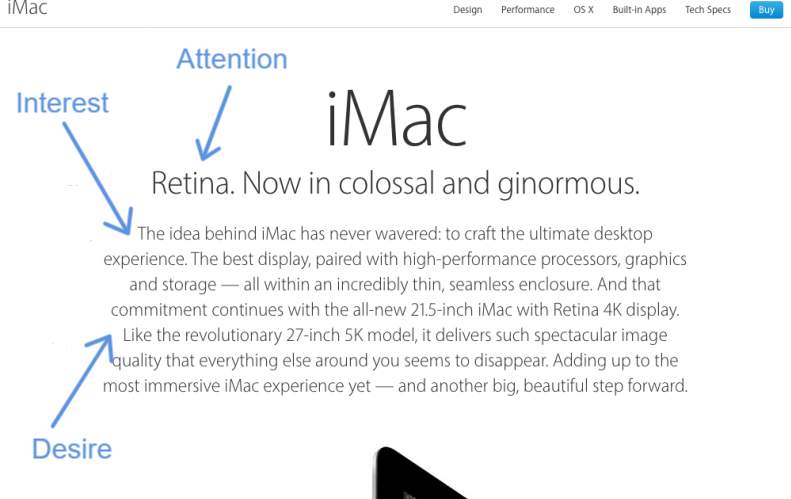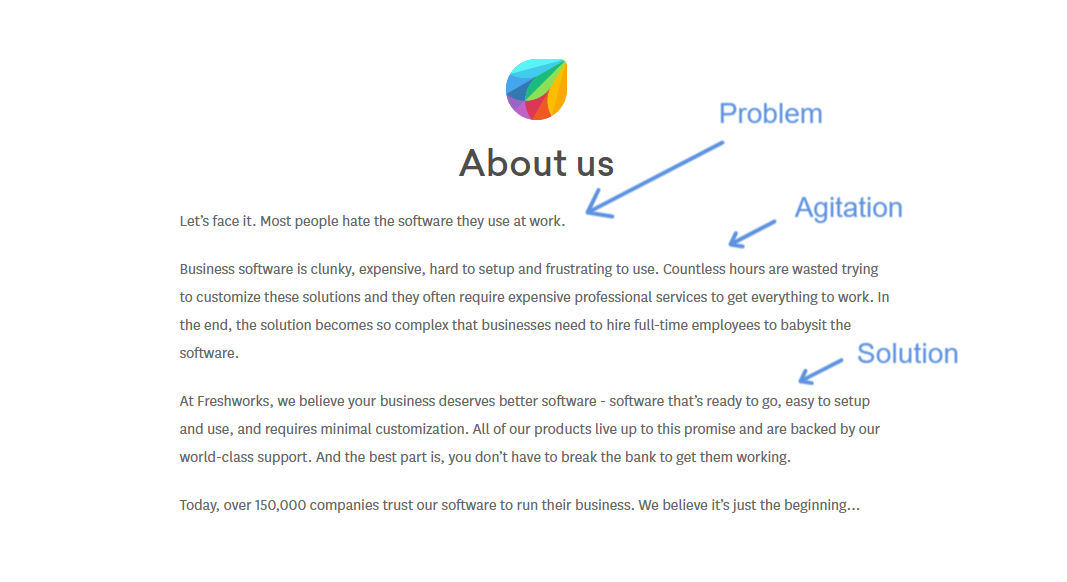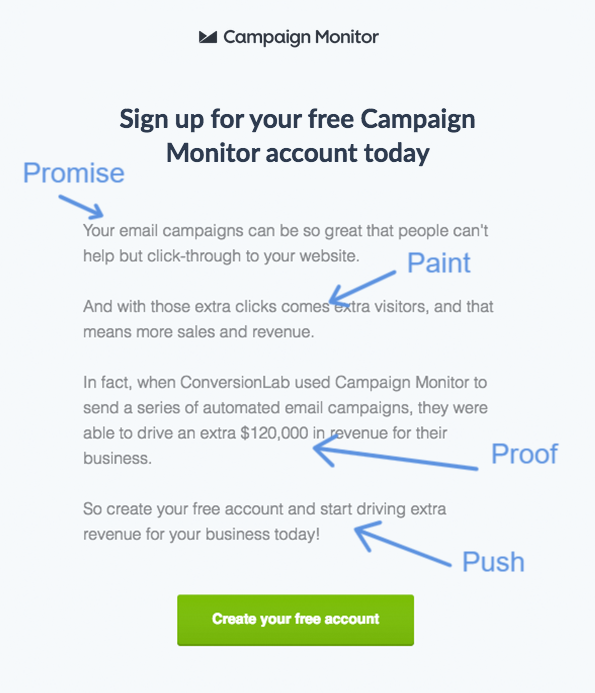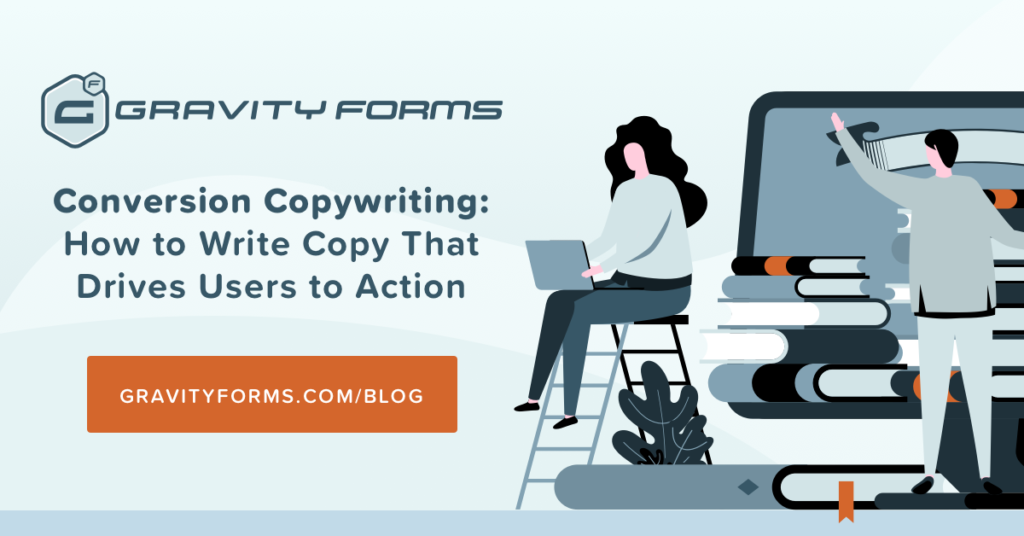Conversion Copywriting: How to Write Copy That Drives Users to Action
Your website content should do more than entertain your readers. It should drive them to take action. That starts with your copy.
You can increase the number of people who engage with your brand and purchase products and services by optimizing your copy. In this article, we’d like to talk about conversion copywriting and how you can use it to boost your conversions.
What Is Conversion Copywriting?
Conversion copywriting is writing that drives people to take action. It’s about delivering the right message at the right time to the right people to elicit a single action.
That action could be whatever you want, like clicking a button, sharing an article on Facebook, adding an item to their shopping cart, or (our favorite) filling out a lead generation form. Conversion copywriting is especially useful to increase your form conversion rates.
Conversion copywriting is only concerned about the next goal. It doesn’t worry about big concepts like branding, reputation, or influence. It has a singular focus on getting the reader to take the next step.
Most importantly, conversion copywriting relies on the marriage of scientific analysis and creativity. It uses testing and data to maximize conversions. Conversion copywriters often test dozens of options to learn which copy works best.
So how do you write for conversions?
Start with Your Audience
You can’t craft compelling copy unless you know who you’re writing for. This is an important part of any marketing discipline, but it’s especially critical if you’re trying to get people to take action.
It’s important to have a clear understanding of your target before you start to craft your copy. If you don’t know your target well already, you’ll have to do some deep research. Conduct interviews with actual people who represent your target. Talking to them online is usually fine, but phone or in-person interviews are always best.
What do you need to know about your target audience?
- Their needs, problems, and expected solutions.
- How they feel about themselves, their problems, and the world.
- Their demographics (age, location, job, gender, income, family, etc.)
- The words and phrases they use.
- The triggers that force them to take action (e.g., “My boss doesn’t like my performance.”)
Furthermore, you’ll want to map out the customer journey. This is the path your customers take that starts with their original problem and ends with your solution. It will help you write copy that walks them down this journey.
The customer journey has three phases:
- Awareness – When the customer realizes they have a problem. (“My social media presence is poor compared to my competitors.”)
- Consideration – When the customer considers purchasing a solution. (“I should hire someone to handle my social media profiles.”)
- Decision – When the customer chooses a specific solution. (“I’m going to hire Jane Doe, an expert social media manager.”
It helps to organize all of your customer information into one document. This is called a buyer persona (or audience persona, customer avatar, etc.).
Define Your Objective
Once you know who you’re writing for, the next step is to define what you want them to do. This should be fairly obvious in most cases, but some marketers try to accomplish too much with their copy.
For example, let’s say you have a landing page that’s designed to capture sign ups for your email list. The page’s copy should only serve that purpose. Don’t push your readers to buy products, attend a webinar, or take your course. Each optional path you give them will simply distract them and reduce your conversions.
This is challenging for a lot of entrepreneurs who have a habit of promoting themselves as much as possible. It’s tempting to bring up your other products and campaigns to squeeze a little more progress, but that isn’t actually helpful.
Furthermore, stick to small, individual actions. “Increase my brand reach” sounds good, but it’s not actionable. “Get Facebook likes” is a far more actionable goal to increase your brand reach. It’s also something you can create conversion copy around.
Walk Them Down Their Path
Your customer understanding represents the starting point. Your objective represents the end point. Your mission is to walk your readers from beginning to end.
If you’re a copywriting beginner, we recommend sticking with copywriting frameworks until you’re comfortable with this kind of writing and have a great understanding of your customers.
What’s a framework? It’s a proven copywriting formula that outlines your content. These systems help you structure your message so it follows a logical and effective flow. All you have to do is write your copy in a way that follows the framework.
There are lots of copywriting frameworks to choose from, but we recommend that you start with these three.
1.) AIDA
Attention – Grab their attention with something jarring, surprising, or provocative.
Interest – Engage them with unique, unusual, or enticing information.
Desire – Inflame their heart so they crave what you’re offering.
Action – Tell them to take the next step.
Apple uses the AIDA framework succinctly. They rope you in with a unique statement, support the claim to make you interested, then make you crave it. Below the copy is a button to purchase your new iMac.

2.) PAS
Problem – Outline the reader’s problem.
Agitation – Poke and prod at the problem to make the reader feel it.
Solution – Present your solution to the problem.
Notice how Freshworks states the problem, riles you up, and then presents a solution (their service).

3.) 4 Ps
Promise – Make a punchy promise that speaks to the reader’s desires.
Paint – Describe the reader’s life if you deliver on your promise
Proof – Support your promise and abolish skepticism with data, evidence, and stories.
Push – Instruct the reader to take action with your solution.
Check out how Campaign Monitor uses the 4 Ps by starting with the promise, painting the reader’s life with the promise’s results, showing proof, and driving action.

As you write, use the language your customers would use. They will be more likely to view you as a solution provider if you can state their problems and needs in the same way they would say it. This is called mimicry of language. It’s extremely effective, according to Northwestern University.
How much should you write? Some people argue that succinct copy is best. Others prefer long form. But it’s not that simple. Your copy should be as long as it needs to make your point and no longer.
Some objectives require more explanation. Some benefits need more words to explain. Some customers need more convincing. Other goals can be accomplished with fewer words. You’ll have to make that decision for yourself. As always, test different versions to determine the most effective.
Use Conversion Copywriting Everywhere
Conversion copywriting isn’t just for longform sales pages. It’s applicable everywhere, like email copy, registration pages, social media posts, opt-in forms and pages, and even blog posts. If you to focus on your customer and define an objective, you’ll create clean copy that maximizes conversions.

